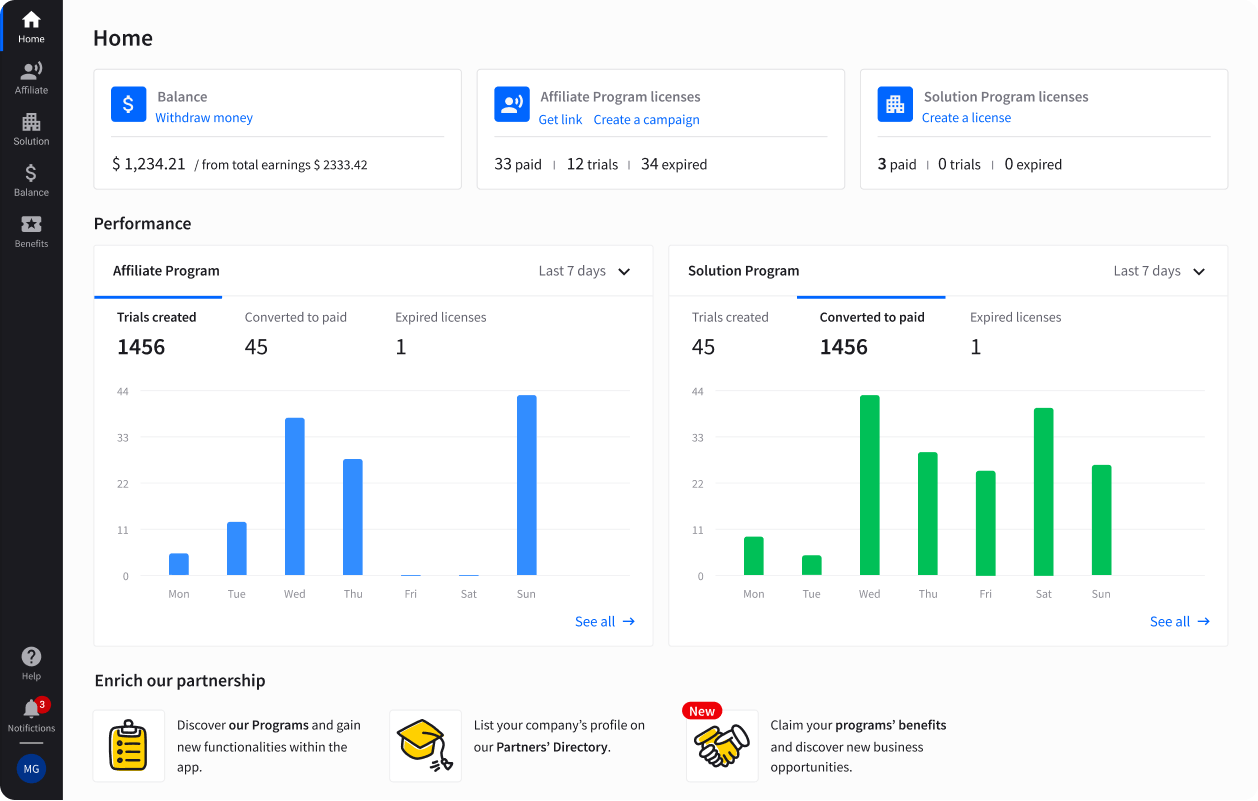Showing top 0 results 0 results found
Showing top 0 results 0 results found

The whopping majority of affiliate marketers operate online through content creation.
Affiliates often wrap their marketing efforts around content writing - product reviews, product comparisons and crafting educational articles for the selected niche, occasionally recommending some products through the affiliate links. These are only a few examples of affiliate activity.
This is why it’s quite important to master headline writing and train your CTR-boosting skills.
However, we are not trying to reinvent the wheel.
There’ve been a lot of different studies covering this topic before. Therefore, within this guide, you’ll find the compilation of popular studies and analyses to back up the key points regarding CTR boosting tricks for writing headlines.
Let’s begin this headline writing 101 guide.
What is headline
A headline is the first line of content on a page, and this makes it the most important element of your content marketing. Frequently, the headline is your only chance to make a good first impression. It’s often the last impression, no matter good or bad.
Your headline turns searchers into readers and makes them read further. Without a proper headline, your content will remain unnoticed, so it might as well not exist. This makes headlines a critical thing from the copywriting and content marketing point of view.
Bear in mind that no matter how good your headline is, most people won’t read past your headlines.
80% of your visitors will read your headline copy. However, only 20% will go on to finish the whole article.
Therefore, headline determines the effectiveness and often the general success of your entire piece of writing.
And this isn’t exaggeration.
Copyblogger
Remember, every element of compelling copy has just one purpose - to get the next sentence read.
Now, when you understand the importance of crafting powerful headlines, see how you can tweak them to boost the CTR heavily.
1. The length of your headline
This may sound obnoxiously obvious, but an optimal headline length makes a significant difference when it comes to clicks through.
A long headline gets too complex and difficult to scan for readers.
Besides, your headline works as an SEO title - a title tag - so if you make it too long, then it will get cut in the middle by Google and won’t be fully displayed on the results page. That’s a big fail.
Too short a headline won’t be remarkable and catchy enough to win the desired eye-time and clicks.
You should play with the length of your headlines and find a sweet spot, but according to the Outbrain study, typically 8-word headlines outperform both the shorter and the longer headline versions and generate about 22% higher click-through rate.
And 8-word headlines are about 60-100 characters long. Therefore, it is reasonable to aim for this exact length when formulating your headlines.
Take a look at the chart below provided by Coschedule.
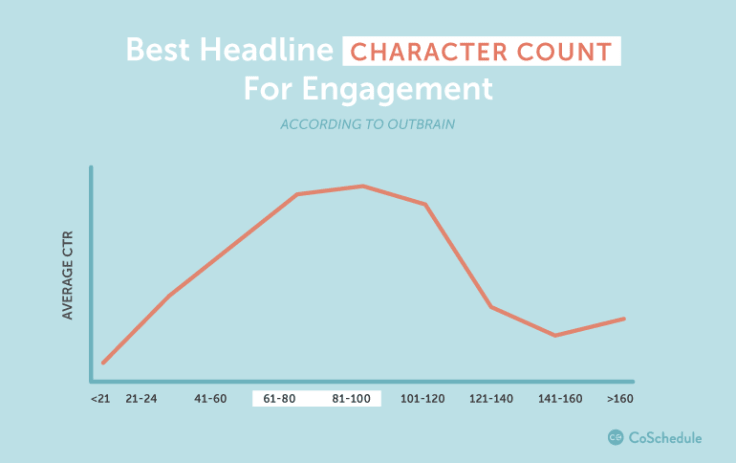
mind that these stats apply to English headlines - source
However, it’s not solely about the length to drive more clicks and improve CTR. Other essentials make your headlines more clickable altogether.
2. The right format of your headline
It’s not a secret that there are headline formulas that encourage more clicks than others.
According to this ShareaSale presentation, 10 Ridiculous Hacks to 5x Click-through-rates by Larry Kim and Steve Rayson, how-tos, question, quiz, and guide headline formulas have more attention-grabbing power than the rest, and they encourage more clicks or shares typically.
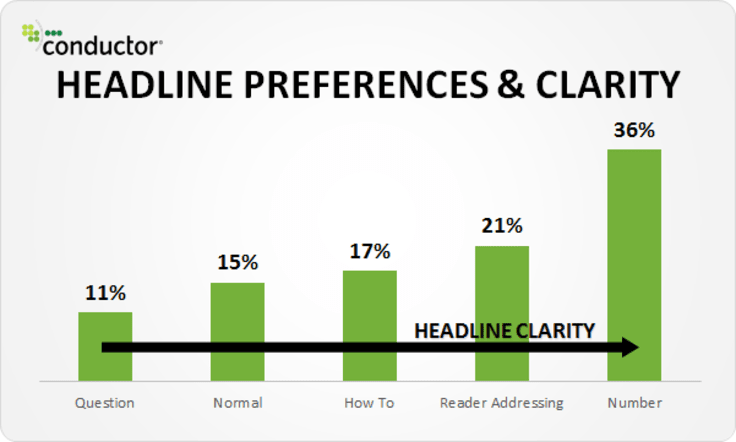
The List [with digits] Headline Formula
Interestingly, Garrett's Moon’s latest study indicates that list headlines that embrace numbers yield better results on Facebook; Twitter and Linkedin.
Take a look at the screen below.
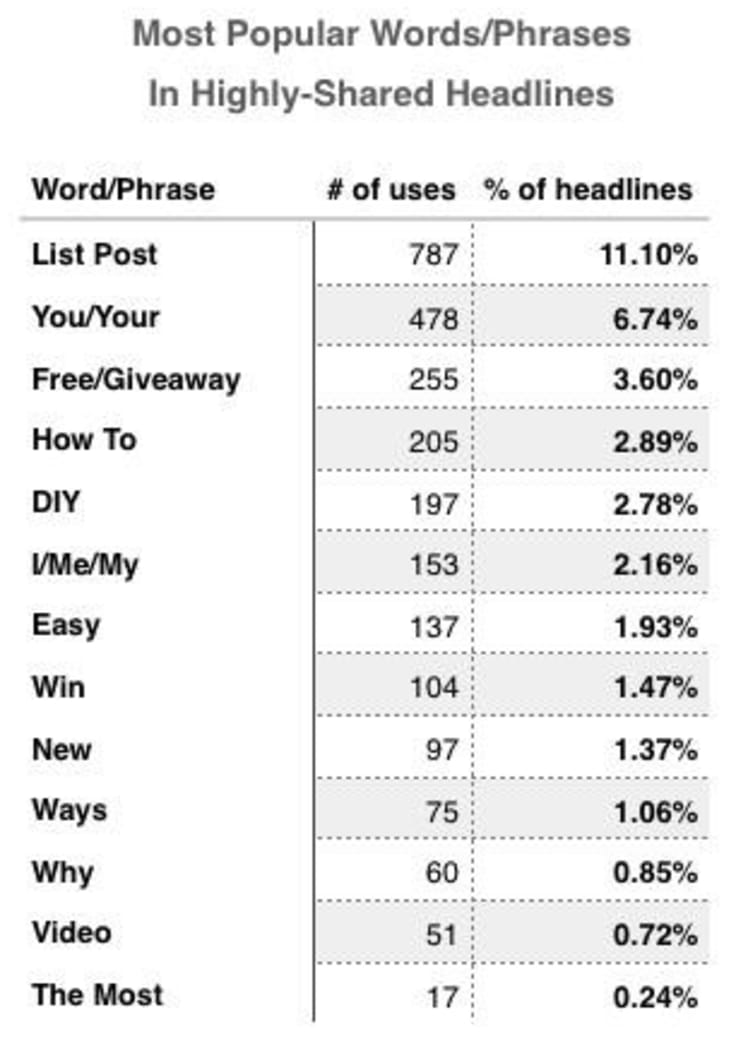
PS: However, don’t be driven solely by social media shares. They don't usually translate to a better conversion.
Yeah, people love list articles and numbers in headlines, this happens mainly because they are very easy to digest and eye-scan. The structure of such a write-up is simple, user-friendly and transparent.
Imagine yourself wanting to read an article about, for instance, matcha - the green tea.
What kind of article structure would you prefer better?
- Would you prefer to read the long and flat text chunks without any clearly defined structure?
or
- Would you rather prefer to read a clear list presenting all the health benefits of drinking matcha daily in the form of sweet and concise bullets?*
I bet you would go for a list post in this case. I’m like 100% sure about it ;-)
A list headline formula indicates that the rest of your copy - the contents - will be crisp, to the point, and well-structured.
This makes it the winning headline formula among the others and we can say that it is a goose that lays golden eggs.
The Question Headline Formula
Another successful headline pattern that will drive you a decent level of clicks is a question formula.
A popular question formula is to use “how” or “why” at the beginning of a declarative statement, so you don’t need to add a question mark at the end. This formula is the easy way to focus on the benefit that reading your article brings in.
The How-to Headline Formula
How to headlines bring in a fantastic benefit to the table. Their mission is to improve, upgrade habits, train the skills in various daily activities, and generally speaking promise lifestyles improvement.
This is why we see them become more and more popular. Because of this How-to headlines literally pop-up like mushrooms after a heavy rain.
However, this great headline pattern carries a substantial promise with it. And this commitment needs to be delivered in the body copy. Be mindful, with this great opportunity that how-to headlines bring in comes the great responsibility.
You shouldn’t focus on the how-to process itself but on the result of this how-to process. What’s more, your how-to process should lead to success, so be aware of it and care to sell a working recipe.
3. Colons or hyphens - two-part headlines
According to Peep Leja from ConversionXL, two-part headlines are also worth noticing.
A good headline demands a head and a tail; it needs to state a particular thesis and then support it by a short clarification in the form of subheadline that digs into it further.
Content Marketing Institute claims that “A colon or hyphen in the title — indicating a subtitle — performed 9% better than headlines without.”
Sub-headlines work to re-affirm the reason why your reader is on the page, they act as a primer for the story that the page is going to tell.
4. Use Keywords
Apply strategically chosen keywords to your headlines. PERIOD. This is a smart approach and a self-explanatory thing. But okay. Let’s elaborate on it further.
Keywords are the primary factor in wrapping your headlines around. Firstly, because your page title is the most important on-page ranking signal in the eyes of Google.
Using keywords implies some distinct benefits, your post gets more visible in search, and this higher visibility translates into the higher conversion rates.
Secondly, when you apply your keywords to headlines strategically, then you realize your short-term content based SEO strategy - little by little, but you do it. And then it can be verified quarterly, to see if you are performing well making a necessary progress at the expected pace and in the right direction.
However, never try to prioritize keywords over the quality of your writing.
The rule of thumb is: Your writing should always put the living, breathing reader and his expectations first.
5. Target Emotions
Apart from targeting keywords, your headlines should target human’s emotions. Yup, to get more eyeballs and improve your click-through-rates, you need to get little emotional over here.
CoSchedule even created a Headline Analyzer for measuring the ratio of your emotional to casual words and the overall performance potential of a headline. And don’t hesitate to wake those negative feelings too.
Multiple studies report that negatively emotional headlines drive even better engagement than those positively characterized. Take a look at the chart below delivered by Outbrain.
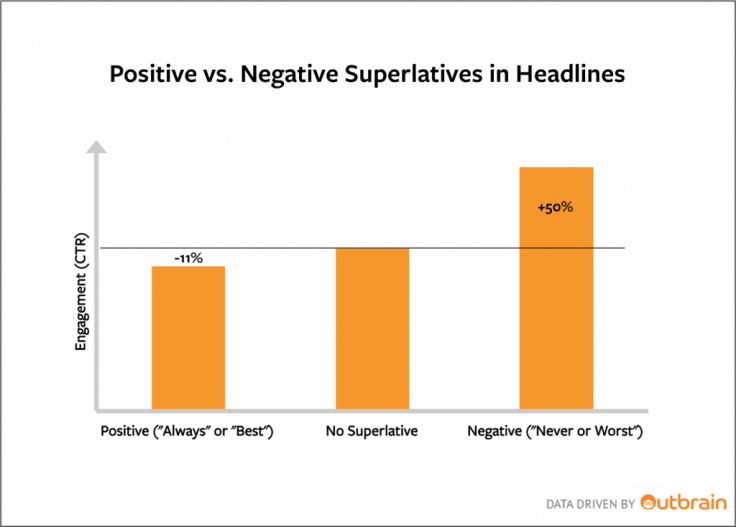
6. Simplify and get straight to the point
Direct headlines should be used much more often than they are actually used these days. Content marketers resort to too much wordplay, cleverness and their jokes are often too obscure for the content to shine through.
As a content marketer and a writer, you should always remember what Steve Jobs used to believe in. That simplicity is the highest form of sophistication. This is also what your readers want.
Be direct and say it simply. Simplify, and never complicate. Favour headlines that get to the point and you will notice a boost in your CTR because people want to know what this is about.
7. Employ the Curiosity Gap
On the other hand, there’s nothing wrong with making your headline vague but intriguing... from time to time.
Crafting headlines, don’t reveal all what you have to say within the title - and this will inevitably increase your CTR. ;-)
Too vague and they won’t care, too specific and they won’t need to click.
Build a tension and excitement smartly with your headline and then BAM! - The most pressing question will be explained by the end of the write-up.
This advice concerns the curiosity gap. And what exactly is this curiosity gap?
George Loewenstein, a professor at Carnegie Melon University, explains that the curiosity gap is literally the gap between what we know and what we want to know.
This is what click baiting grew on.
Of course, we aren’t trying to encourage you to use click-baiting because this is not the right way to go, especially, if the bait itself doesn’t carry anything special to offer once you click through.
But the sole idea of click-baiting that bases on the curiosity gap is approved by marketing experts.
Peter Koechley, the co-founder of Upworthy, advises how to use the curiosity gap technique for headline writing.
source
According to him, it’s all about revealing just enough to maximize the curiosity without giving away the whole story. You need to find the right balance for each headline, so the perfect amount is said.
8. Leverage Branding
If you represent a well-known, well-established brand, then there is a point in adding its name to a title tag that displays within the search results.
People trust big brands, so they often presume that once a trusted company comes up with content, then it needs to represent the highest content writing quality.
In those circumstances, the use of a brand name in the title tag adds a substantial value and credibility that sharply boosts CTR.
9. Target “You” - use the second person
YOU is a power word.
It’s highly recommended to target copywriting at YOU in any kind of communication.
It’s a hypnotic thing and the way to turn a general voice of writing to a personal voice. Using YOU to your messages is the simplest way to personalize them. YOU builds a relationship between the author and receiver of the communication.
This has a lot to do with our unconscious mind and the persuasion techniques.
We just see such a message targeted at us differently. It speaks to us on a much deeper level and is more actionable, than a message aimed at a crowd.
It’s the sound advice to target the second person in your copywriting because then the whole text becomes more personal. And this trick, when applied to headline writing, naturally translates into higher conversion rates.
PS: You can read more about the magical power of YOU in Robert Cialdini’s books about persuasion.
10. Working title
Create a working title at the beginning - before you start working on the core content.
Copyblogger recommends this method stating that your headline is a promise and the body content should be a fulfillment of that promise. Once you have your headline articulated, your promise is declared, then all you have to do is to ‘reverse engineer’ your promise.
Besides, you have to state clearly (even for yourself, the author) the core concept of your post. Know what exactly you are writing about and what kind of information you should be looking for during your research.
Wrapping Up
So here it is. This is how we’ve arrived at the end of this guide. Hope you liked my compilation of headline tweaks that will surely boost your CTR and win you more eyeballs ;-)
Some changes can seem small when you look at them individually. However, once you look at all these little tweaks as a whole, especially, when you apply them all (well at least some of them as there are tips that contradict each other) at the same time. Then they'll make a dramatic difference.
Now I can give you a bonus piece of advice:
(11) Whenever you apply all these tricks, do A/B testing
Create several different headlines and test their efficiency, for instance, by posting various updates on social media channels. A version that reaps the best results - the winning one - should be applied in the future more frequently.
Internet marketing it is a playground of constant testing, this is not something that can be done once. You should always be testing different solutions and comparing their outcomes, this is how you pursue perfection - that is non-existent but this is rather a minor issue here - and continually improve your skills.
If you have any questions or want to talk about this topic further get in touch with me via Twitter.
Happy marketing!
Kasia



